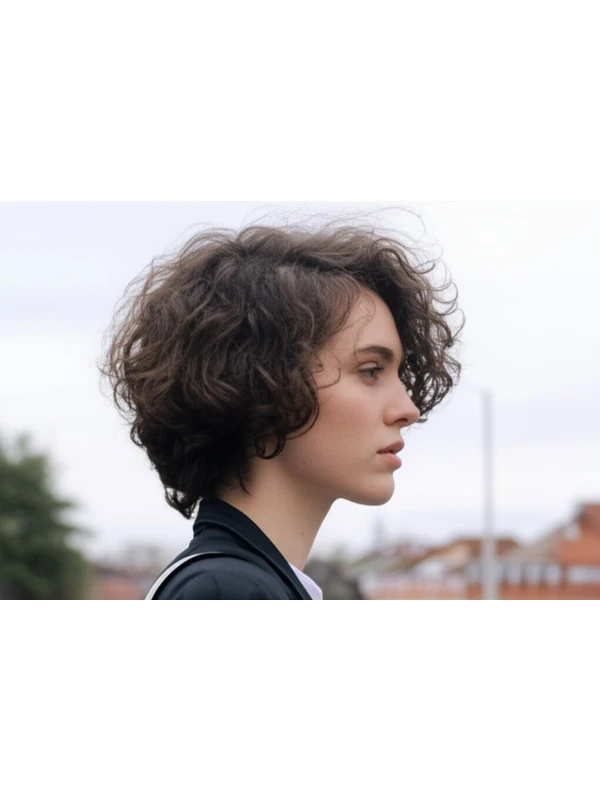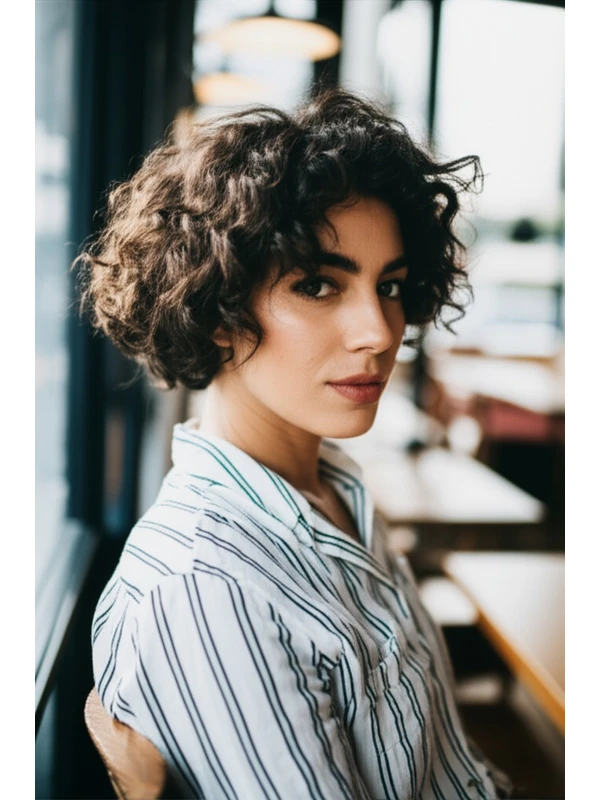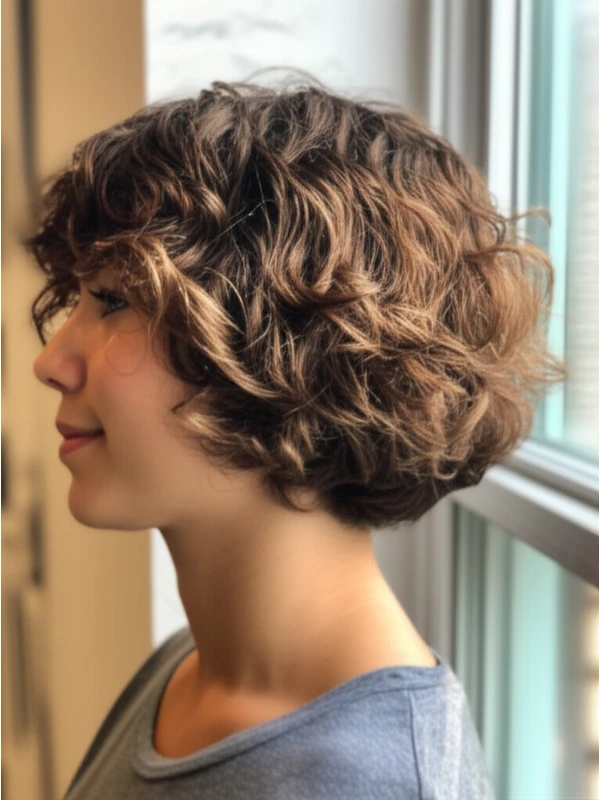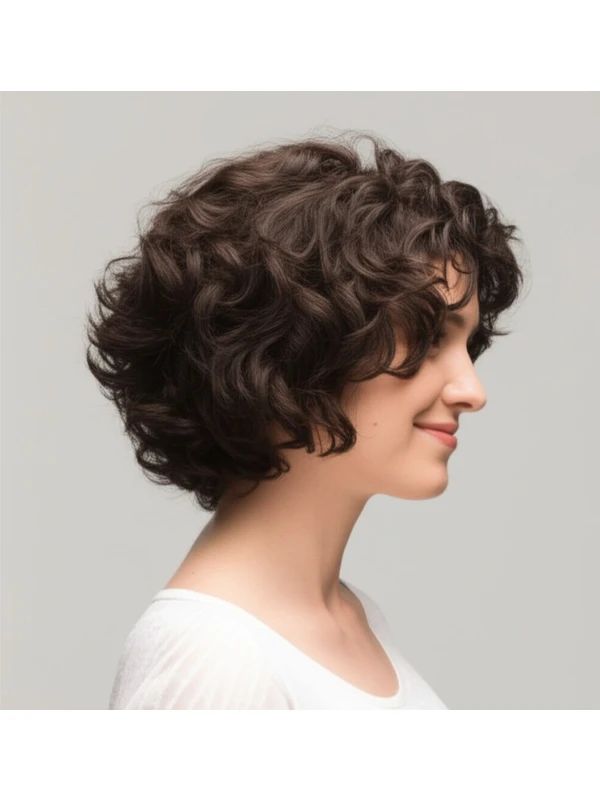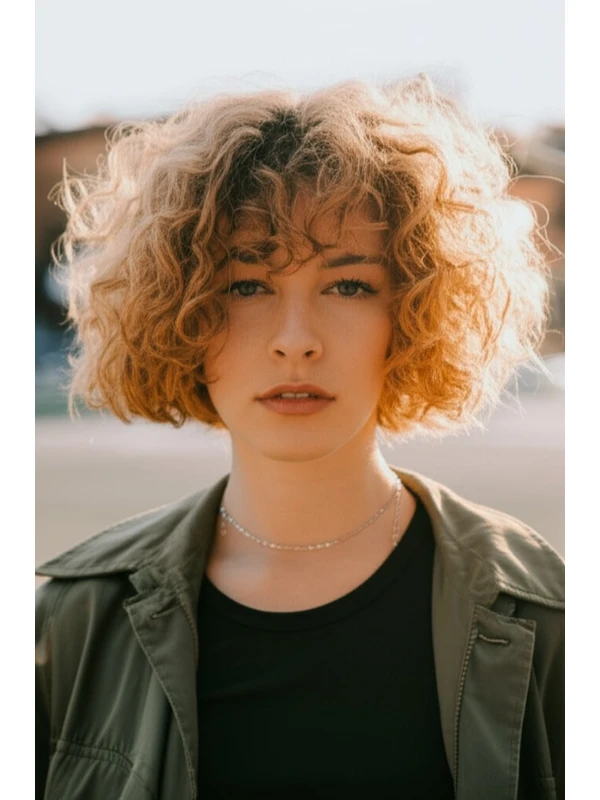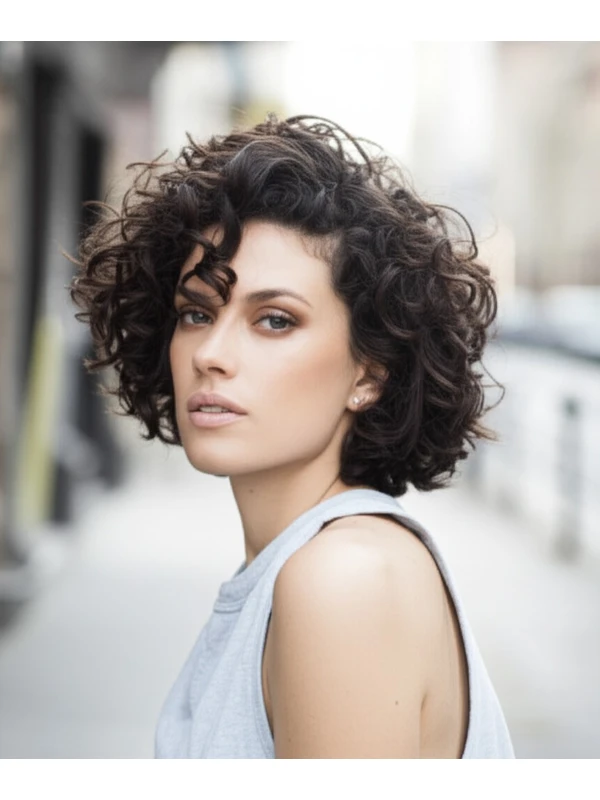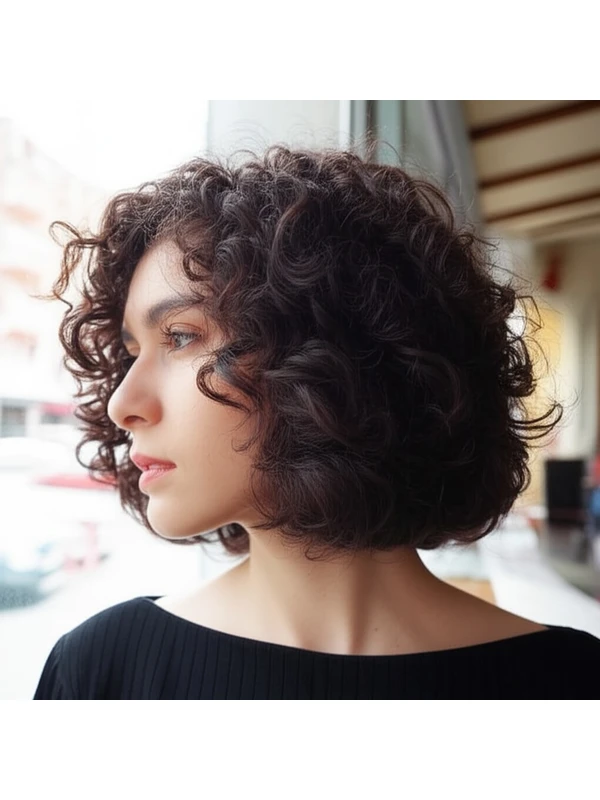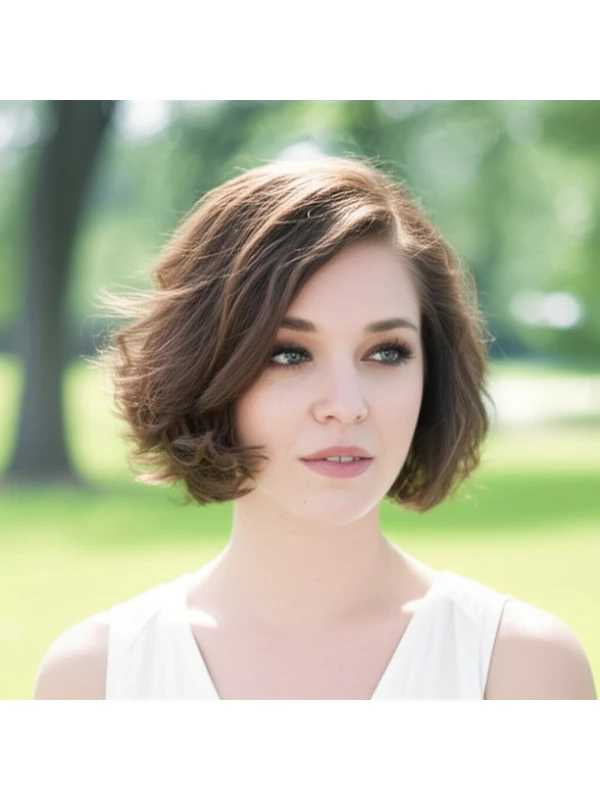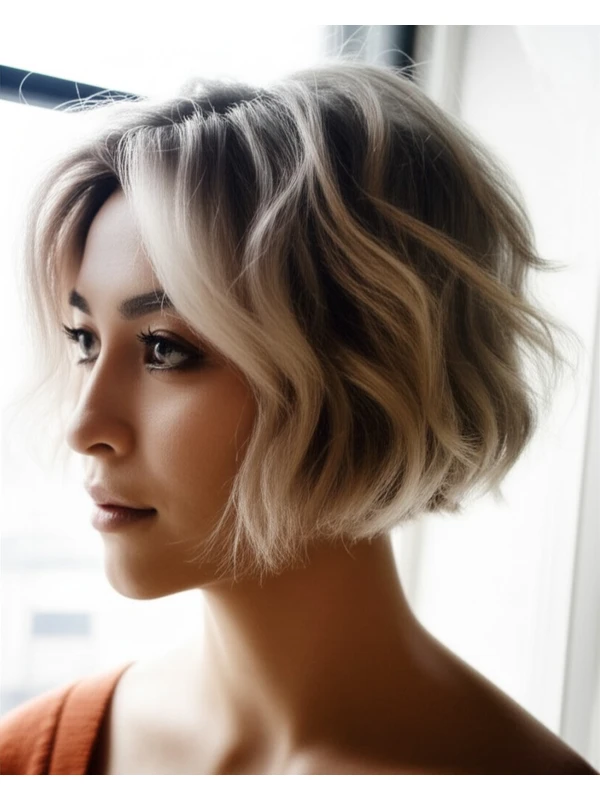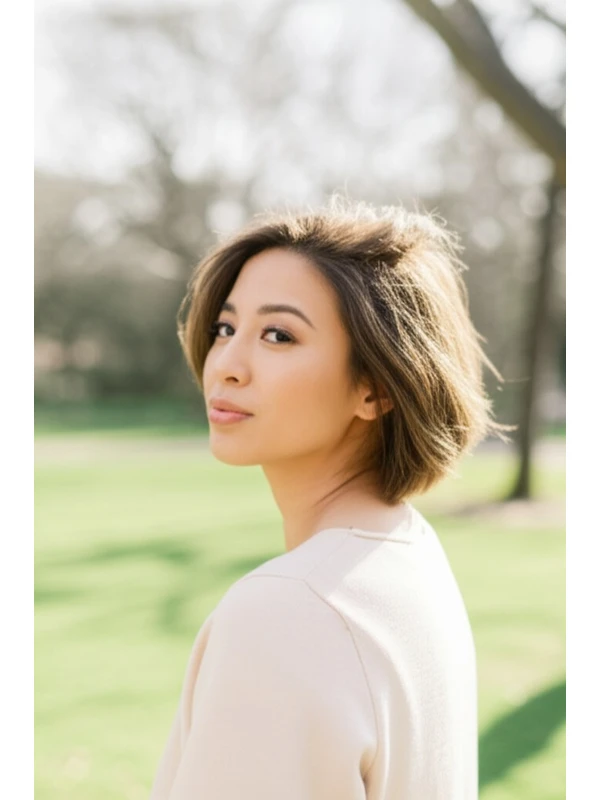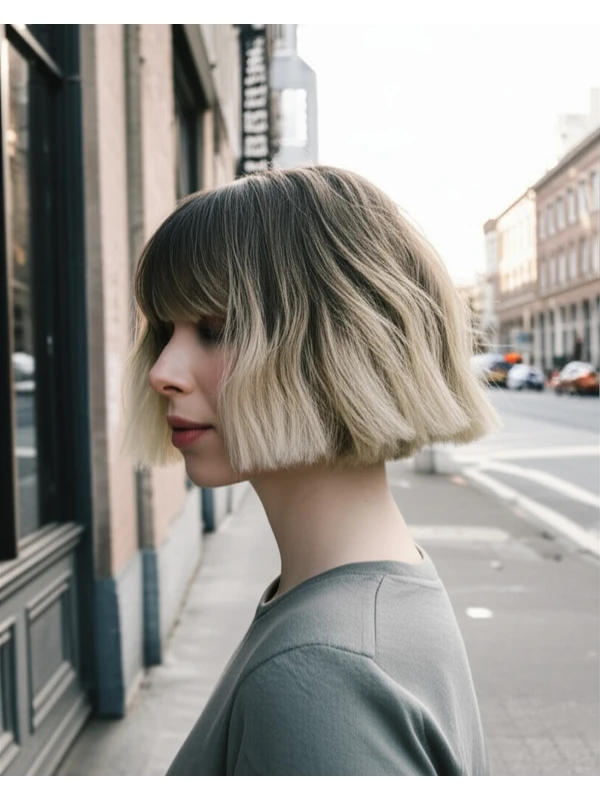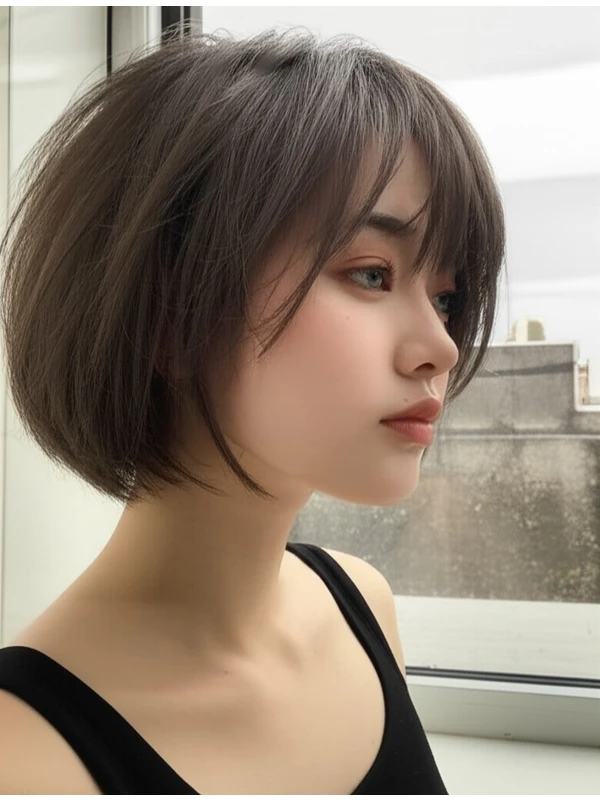#The Curly Bob: A Guide to Bouncy Chic
The curly bob is a hugely popular hairstyle for good reason – it's stylish, playful, and can be adapted to suit almost anyone! This guide will break down everything you need to know about rocking this versatile cut, from finding the perfect length to keeping it looking its best.
#1) Background & Definition: What Is a Curly Bob?
The curly bob isn't just any short haircut; it’s specifically designed to showcase and celebrate natural curls or waves. It generally refers to a bob (a chin-length to shoulder-length cut) that retains its shape while embracing the bounce and texture of your hair.
Key Features:
- Layered: Layers are essential. They remove weight, encourage curl definition, and prevent the bob from looking bulky or triangular.
- Shape Focused: The goal is a defined shape – often rounded, angled, or slightly asymmetrical – that complements your face.
- Volume at the Roots: A good curly bob has lift at the roots to avoid a flat, lifeless look.
Length Ranges: Typically falls between chin-length (just grazing the jawline) and mid-neck length. Shorter bobs can be more edgy, while longer bobs offer more versatility for styling.
Alternative Names: Curly lob (long bob), textured bob, layered bob with curls.
#2) Face Shape Fit: Finding Your Perfect Angle
The beauty of the curly bob is its adaptability! However, certain variations work better with different face shapes.
- Oval: Lucky you! Almost any curly bob will flatter an oval face. Experiment with asymmetry and varying lengths for a modern look. A side-swept fringe softens features even further.
- Round: A slightly angled or asymmetrical bob (longer in the front) helps elongate the face. Avoid blunt, chin-length bobs that can accentuate roundness. A long, wispy fringe can also help slim the face.
- Square: Soften strong angles with a rounded curly bob and layers that frame the jawline. Side parts are your friend! A piecey, textured fringe adds softness.
- Heart: Chin-length or slightly longer bobs work well to balance a wider forehead and pointed chin. A side-swept fringe can minimize forehead width. Avoid overly voluminous tops that accentuate the face's shape.
- Diamond: Curly bobs with volume at the sides help soften diamond shapes, balancing wide cheekbones. A full, textured fringe can also add softness.
- Oblong (Long): A shorter, more layered bob adds width and helps to shorten a long face. Avoid styles that are too sleek or pulled back tightly. Curtain bangs work wonders!
#3) Body Proportions & Height Guidance: Silhouette Matters
Your height and body shape influence how the curly bob looks on you.
- Petite (Under 5’4”): Shorter, chin-length bobs can overwhelm a petite frame if they're too voluminous. Opt for a slightly longer bob or one with less volume at the sides to maintain balance.
- Average Height (5’4”-5’8”): You have more flexibility! Experiment with different lengths and volumes.
- Tall (Over 5’8”): A mid-neck or shoulder-length bob can look stunning on taller individuals, especially if you have broad shoulders. More volume is generally flattering.
- Narrow Shoulders: Create the illusion of wider shoulders with a curly bob that has more volume at the sides and layers that angle outwards.
- Broad Shoulders: Avoid excessive volume at the shoulder line, as it can emphasize width. A slightly tapered bob or one with strategic layering can help balance proportions.
- Short Neck: Avoid chin-length bobs that might make your neck appear shorter. Opt for a longer bob or add height to the crown of your head with styling.
- Long Neck: A chin-length bob can be very flattering, drawing attention away from the neck's length.
#4) Works Best With Hair Types & Densities: Curl Power!
The curly bob shines on a variety of hair types and densities, but understanding your own hair is key.
- Hair Types:
- Straight/Wavy (2A-3B): Layers are crucial to create the illusion of curl and prevent a triangular shape. A texturizing product will help enhance waves.
- Curly (3C-4A): This is where the curly bob truly excels! Embrace your natural curl pattern with strategic layering and diffusing techniques.
- Coily (4B-4C): The curly bob can be incredibly flattering, but shrinkage needs to be considered. Discuss length expectations with your stylist – what looks like a shoulder-length cut in the salon might end up being chin-length once dry!
- Hair Density:
- Fine Hair: Layers are essential for creating volume and preventing flatness. Avoid overly heavy products that can weigh hair down.
- Medium Hair: A versatile density – most curly bob variations will work well.
- Thick Hair: Requires more layers to remove weight and create movement. Consider a point-cutting technique for softer edges.
- Shrinkage Factor: Curls and coils can shrink significantly when dry. Communicate your desired length after shrinkage with your stylist!
#5) Styling Variations: From Casual to Chic
The curly bob is incredibly versatile – here's how to change it up:
- Sleek vs. Textured: A sleek, defined look uses more product and precise styling. A textured look embraces natural curl patterns for a relaxed vibe.
- Middle vs. Side Part: Side parts add asymmetry and volume; middle parts create balance.
- Fringe Variations: Wispy bangs, blunt bangs (for bolder looks), or curtain bangs – the options are endless!
- Occasion Styling:
- Casual: Air-dry with a curl cream for effortless texture.
- Office: Diffuse for more definition and polish.
- Evening: Add shine serum and create a slightly more sculpted look.
#6) Maintenance: Keeping Your Bob Beautiful
- Trim Cadence: Every 6-8 weeks to maintain shape, especially with curly/coily hair that grows quickly.
- At-Home Routine: Focus on moisture! Deep condition weekly.
- Heat vs. Air-Dry: Minimize heat styling whenever possible. Diffusing is a gentler alternative to direct heat.
- Product Checklist:
- Moisturizing Shampoo & Conditioner
- Leave-in Conditioner (essential for curls/coils)
- Curl Cream or Gel (for definition and hold)
- Shine Serum (for finishing)
- Estimated Daily Styling Time: 15-45 minutes, depending on desired style and hair type.
#7) Grow-Out Roadmap: Evolution Over Time
- Months 1-3: The bob maintains its shape beautifully. Regular trims are key.
- Months 3-6: The length starts to grow out. Consider adding face-framing layers or a fringe to maintain the style's appeal. It might start to look boxier – communicate this with your stylist for adjustments.
#8) Color Pairings: Enhancing Your Bob
- Cool Undertones (Ash, Blue): Icy blondes, cool browns, and even subtle blue or purple tones can enhance the coolness of a curly bob.
- Warm Undertones (Gold, Red): Honey blondes, caramel highlights, copper reds – warm tones complement warmer skin tones beautifully.
- Low-Commitment Options: Balayage or babylights add dimension without harsh root lines and are easier to maintain as the hair grows.
#9) Season & Occasion Guide: Seasonal Styling
- Spring/Summer: Lighter, brighter colors and a more relaxed, textured style feel fresh for warmer months.
- Fall/Winter: Richer tones (chocolate browns, deep reds) and slightly more polished styles can add warmth and sophistication.
#10) Cost & Time: Salon Investment
- Salon Time: Expect 1.5 – 3 hours for the initial cut and style.
- Price Range: The cost will vary based on location and stylist experience, but generally falls within a moderate to higher price bracket compared to simpler cuts.
#11) Pros & Cons: Weighing Your Options
Pros: Stylish, versatile, flattering on many face shapes, highlights natural curls/waves. Cons: Requires regular trims, can be time-consuming to style (depending on desired look), shrinkage needs careful consideration for curly/coily hair.
#12) Salon Consultation Script: Questions to Ask
Here are some prompts you can use when discussing your curly bob with a stylist:
- "I love the idea of a curly bob, but I'm worried about it looking too boxy on my [face shape]. What adjustments would you recommend?"
- “How will shrinkage affect the length once my hair is dry?”
- "Can you show me examples of different fringe options that would work with this cut?"
- "What products do you recommend for styling and maintaining a curly bob, given my hair type and density?"
- "I'm looking for a low-maintenance style. What can I do to minimize daily styling time?”
